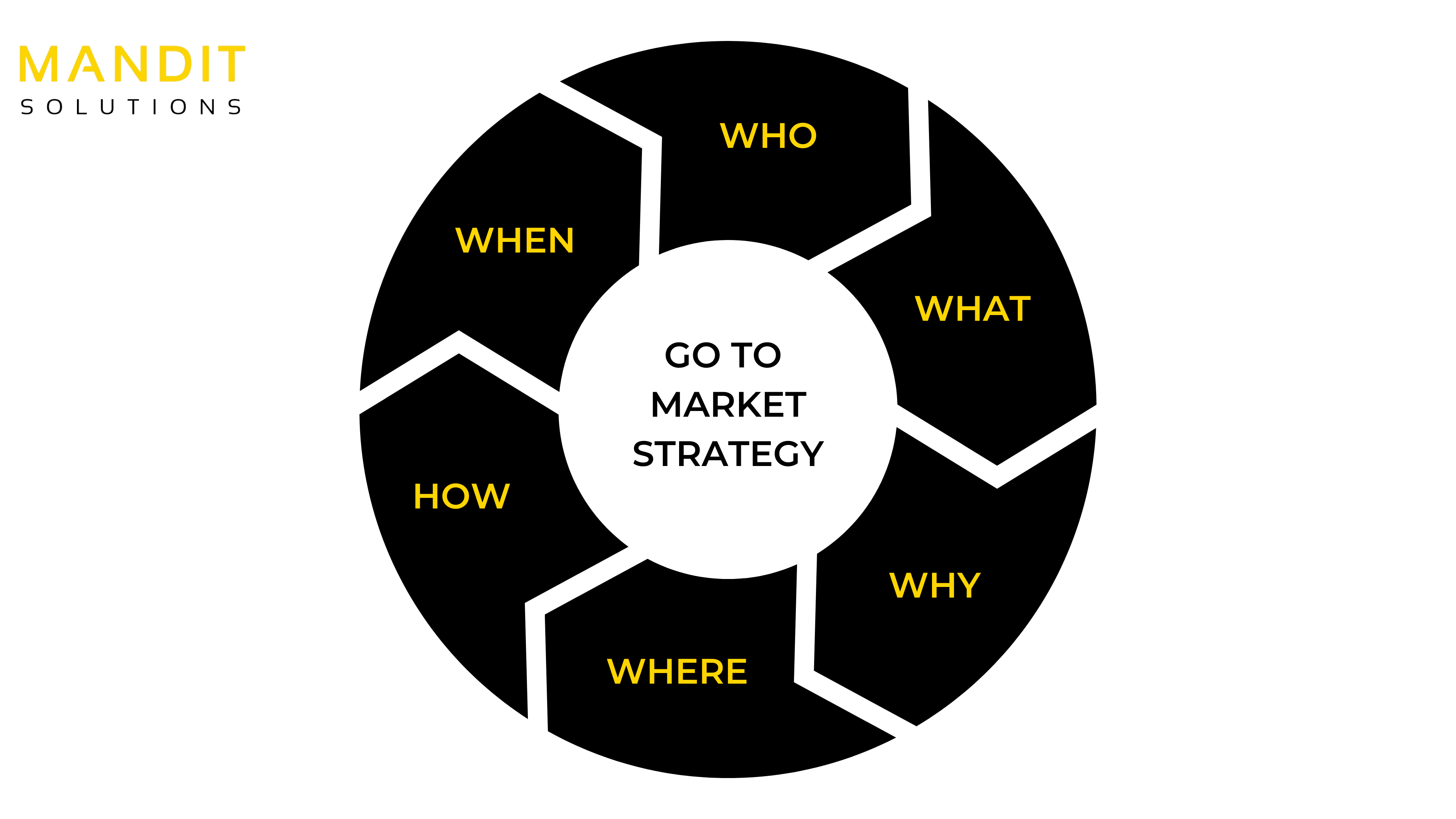
Any company’s ultimate objective is to expand and scale. It is never enough to conquer a single market or customer niche. Businesses must innovate in order to grow, and many innovations carry operational risks.
A good launch may generate significant benefits, while a bad launch might devastate your firm.
GTM is a transformational process for accelerating your path to market in which high-performing revenue teams (marketing, sales, and customer success) deliver a connected customer experience and each touchpoint reinforces your company’s brand, values, and vision.
In other words, your GTM process connects your company strategy to your customer outcomes, assisting customers in realizing the dream upon which the company was founded and reaping the benefits that dream promises.
It may be helpful to think of your company’s strategy, customer outcomes, and GTM as three gears that keep your company moving forward, with GTM serving as the connecting gear between the other two. It is the collaboration of these three gears that allows for extraordinary growth.

So, let’s get this implemented effectively.
Setting yourself up for growth entails identifying the most suitable situation for your launch date and understanding how to capitalize on that potential.
When creating your go-to-market plan, you must ensure that:
Understanding your market is the first step. Your services are not for every person. Otherwise, everything would be far too simple!
So, where do you begin with your go-to-market strategy?
SimilarWeb and Google Trends are excellent resources for learning more about your brand’s target demographic.
By locating the most booming business for you. This entails determining the best markets for your products or services depending on the following:
In one or two brief phrases, the value proposition illustrates how your product addresses your prospects’ issues and makes their lives simpler and better. Follow these steps to create a good value proposition: Create the most persuasive 30-second elevator pitch you can think of, and make a note of it.
Then stop overstuffing keywords and reduce it to a phrase that can be read aloud in under 10 seconds. The more precise your target market, the easier it will be to design a compelling value proposition or product pitch that will set your organization apart from the competition.
Pricing is more than a monetary choice. Of course, your price structure must make sense in light of your company plan, but it also serves as a signal to customers about the value you intend to deliver.
Pricing reflects every other component of your go-to-market strategy, from your customer to the market to how you employ methods such as public relations, B2B marketing, and B2B sales. And it must be a conscious and intentional decision.
Marketing is vital regardless of your go-to-market plan, but it is more critical if your product is marketing demanding. If you anticipate clients to find you through advertisements and content rather than you selling to them, you should pay close attention to this portion of your plan.
What you should be covering is as follows:
Branding
Marketing Site
Events, Ads, and PR
After you’ve identified the context in which your product exists, it should be evident who your competitors are and which customers you should focus on, as well as those you should disregard.
It’s time to create buyer persona profiles in order to better understand your customers’ behaviors, requirements, and issues, as well as where you can find them.
A buyer persona’s account should comprise at least the basic information:
Before beginning to develop your go-to-market strategy, the final stage is to understand how customers learn about your company and what actions they take before and after purchasing your product. This visualization can be achieved by tracing out their journey with a user journey mapping tool.
Developing this will assist you in understanding the platforms via which you should communicate with customers, where they connect with you and your business, and what their goals are at each stage.
A customer journey map is a graphic chronological depiction of all connections in your product’s purchasing process. It lets you see your business through the eyes of a user during the stages of awareness, contemplation, choice, and advocacy, and it may help you enhance their experience along the trip.
Remember to put as much consideration into your go-to marketing plan design as you do the rest of your content. Keep it tailored, succinct, and focused, and your audience will take note!
So, what’s next? You’re suddenly quite busy developing your own go-to-market plan based on these processes. For any queries directly reach us at contact@manditsolutions.com, or call us now on +1 8329663622
Copyright © 2024 Mandit Solutions Private Limited
| Cookie | Duration | Description |
|---|---|---|
| cookielawinfo-checkbox-analytics | 11 months | This cookie is set by GDPR Cookie Consent plugin. The cookie is used to store the user consent for the cookies in the category "Analytics". |
| cookielawinfo-checkbox-functional | 11 months | The cookie is set by GDPR cookie consent to record the user consent for the cookies in the category "Functional". |
| cookielawinfo-checkbox-necessary | 11 months | This cookie is set by GDPR Cookie Consent plugin. The cookies is used to store the user consent for the cookies in the category "Necessary". |
| cookielawinfo-checkbox-others | 11 months | This cookie is set by GDPR Cookie Consent plugin. The cookie is used to store the user consent for the cookies in the category "Other. |
| cookielawinfo-checkbox-performance | 11 months | This cookie is set by GDPR Cookie Consent plugin. The cookie is used to store the user consent for the cookies in the category "Performance". |
| viewed_cookie_policy | 11 months | The cookie is set by the GDPR Cookie Consent plugin and is used to store whether or not user has consented to the use of cookies. It does not store any personal data. |